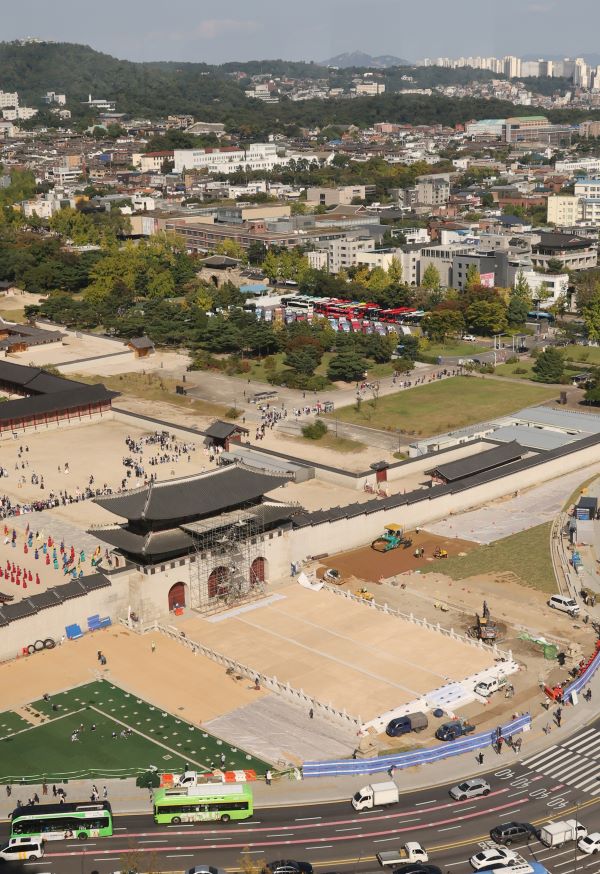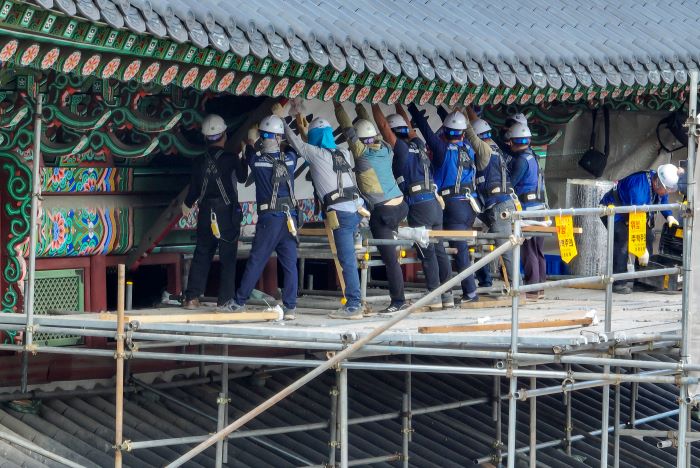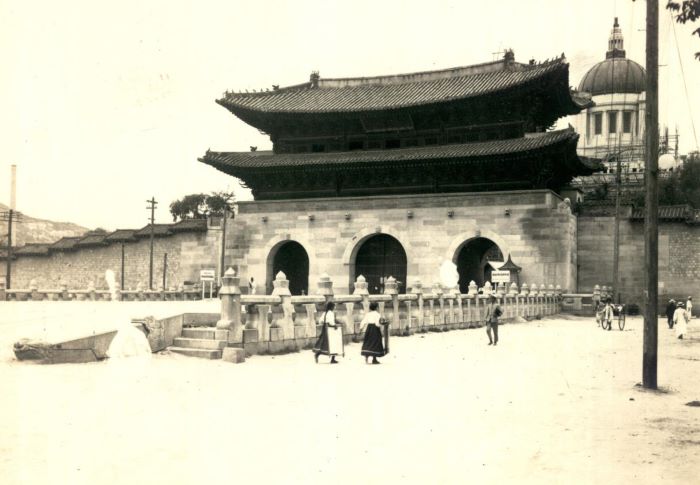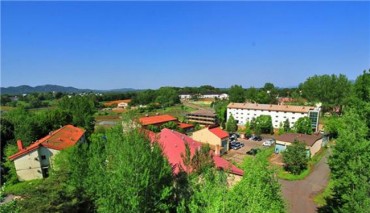
Final restoration work takes place around Gyeongbok Palace’s Gwanghwamun in central Seoul on Oct. 12, 2023, ahead of the unveiling of the ceremonial stage in front of the gate on Oct. 15. (Yonhap)
SEOUL, Oct. 15 (Korea Bizwire) –The ceremonial stage in front of Gyeongbok Palace’s Gwanghwamun gate in Seoul has been restored to its original state and will open to the public for the first time in about a century.
The Cultural Heritage Administration (CHA) will hold a ceremony to mark the completion of the yearlong project to restore the “woldae,” a large square platform made of stone in front of significant palace buildings.

Scholars say the woldae was destroyed by the Japanese colonizers when they constructed tram rails in front of Gwanghwamun in preparation for a Joseon expo in 1923. Korea was a colony of Japan from 1910 to 1945.
The woldae in front of Gwanghwamun, the main gate to Gyeongbok Palace, is believed to have served as a meeting place for the king and the people during important national events.
Scholars believe it was first built during the reign of King Sejong (1418-1450) and was later reconstructed in 1867 after being destroyed during the Japanese invasions of Korea in the 16th century.

Workers remove the signboard of Gwanghwamun gate in central Seoul on Oct. 12, 2023, ahead of the unveiling of a new signboard with golden letters on Oct. 15.
The woldae was later destroyed by Japanese colonizers in 1923 when tram rails were laid in front of Gwanghwamun. The restoration of the woldae, a century after its destruction, is seen as a significant cultural milestone.
The ceremony will also unveil the gate’s new signboard with golden letters reading “Gwanghwamun” in Chinese characters on a black background.

Final restoration work takes place around Gyeongbok Palace’s Gwanghwamun in central Seoul on Oct. 12, 2023, ahead of the unveiling of the ceremonial stage in front of the gate on Oct. 15.
The CHA considers the restoration of the woldae essential as it connects Gwanghwamun and Yukjo Street, restoring the central axis of Hanyang Fortress and connecting historical sites.
Yukjo Street is the wide street in front of Gwanghwamun, where the central government offices of the Joseon Dynasty were located.

Old view of Gwanghwamun Woldae (Photographed near Gwanghwamun around 1923) (Courtesy of the National History Compilation Committee)
Image credit: Yonhap, the National History Compilation Committee / photonews@koreabizwire.com






